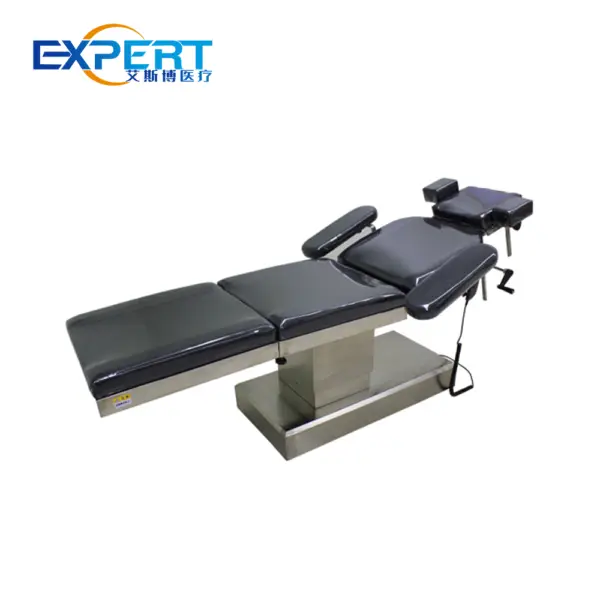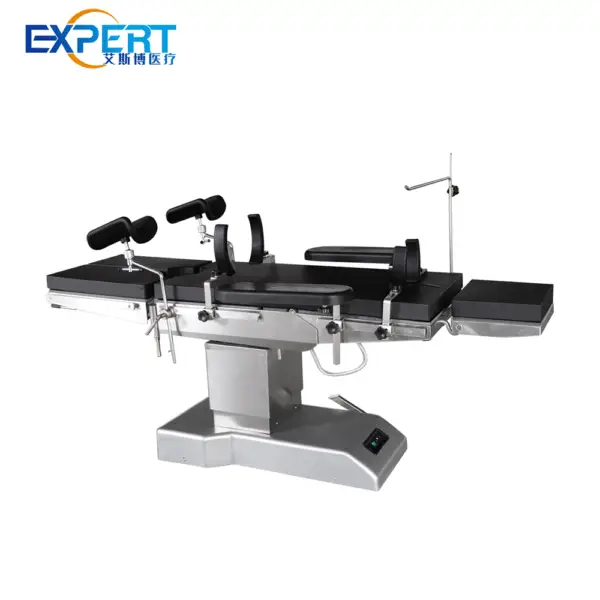Address
304 North Cardinal St.
Dorchester Center, MA 02124
Work Hours
Monday to Friday: 7AM - 7PM
Weekend: 10AM - 5PM
Address
304 North Cardinal St.
Dorchester Center, MA 02124
Work Hours
Monday to Friday: 7AM - 7PM
Weekend: 10AM - 5PM

In the ever-evolving landscape of modern medicine, surgical procedures have become increasingly sophisticated, necessitating advanced equipment to ensure optimal patient outcomes. Among the crucial tools in the operating room, operating tables stand out as fundamental to the success of surgeries across various medical specialties. This blog explores the pivotal role of advanced operating tables in surgery, delving into their features, benefits, and impact on patient care.

In the ever-evolving landscape of modern medicine, surgical procedures have become increasingly sophisticated, necessitating advanced equipment to ensure optimal patient outcomes. Among the crucial tools in the operating room, operating tables stand out as fundamental to the success of surgeries across various medical specialties. This blog explores the pivotal role of advanced operating tables in surgery, delving into their features, benefits, and impact on patient care.
Operating tables have undergone significant evolution over the years, transitioning from rudimentary platforms to sophisticated, multifunctional apparatus. Early operating table were primarily static, offering limited adjustability and ergonomic support. However, advancements in technology have revolutionized this essential surgical equipment, giving rise to a diverse range of options tailored to meet the specific needs of different surgical procedures and patient populations.
Modern operating tables boast an array of innovative features designed to enhance surgical precision, efficiency, and patient safety. These include:
The integration of advanced operating tables into surgical practice has yielded tangible benefits in terms of patient outcomes and procedural efficiency. Several studies have demonstrated:

| Feature | Description |
|---|---|
| Electro-Hydraulic Adjustment | Allows precise positioning of the operating table using electro-hydraulic mechanisms, enhancing surgical access and ergonomic support. |
| Radiolucent Design | Enables unimpeded imaging during fluoroscopy-guided procedures, facilitating real-time visualization without patient repositioning. |
| Integrated Patient Monitoring | Provides continuous monitoring of vital signs throughout the surgical procedure, enhancing patient safety and facilitating early intervention. |
| Compatibility with Accessories | Accommodates a variety of surgical accessories, such as traction devices and extension modules, to customize the operating table setup. |
| Remote Control Functionality | Allows for remote adjustment of table positions and settings during surgery, improving workflow efficiency and minimizing disruptions. |
The evolution of operating tables from basic platforms to sophisticated surgical instruments underscores their indispensable role in modern healthcare. Advanced operating tables equipped with electro-hydraulic adjustment, radiolucent design, integrated patient monitoring, compatibility with surgical accessories, and remote control functionality have revolutionized surgical practice, enhancing precision, efficiency, and patient safety. As technology continues to advance, operating table will undoubtedly remain at the forefront of surgical innovation, contributing to improved outcomes and enhanced patient care.
Q:Are advanced operating tables suitable for all surgical specialties?
A:Advanced operating tables are designed to accommodate a wide range of surgical procedures across various specialties, including orthopedics, neurosurgery, cardiovascular surgery, and more.
Q:Do advanced operating tables require specialized training for operation?
A:While familiarity with the features and functions of advanced operating table is beneficial, most models are designed for intuitive operation and come with user-friendly interfaces. Training may be provided by equipment manufacturers or hospital staff to ensure safe and efficient use.
Q:Are advanced operating tables cost-effective for healthcare facilities?
A:Despite higher initial investment costs, advanced operating table offer long-term cost savings through reduced surgical complications, shorter recovery times, and enhanced procedural efficiency. Their contribution to improved patient outcomes makes them a valuable investment for healthcare facilities.
Q:Can advanced operating tables be customized to meet specific surgical requirements?
A:Yes, many advanced operating tables are modular in design, allowing for customization with specialized accessories and positioning aids to accommodate the unique needs of each surgical procedure and patient population.
Q:Are there any limitations or contraindications associated with advanced operating tables?
A:While advanced operating tables offer numerous benefits, they may not be suitable for all patients or surgical scenarios. Certain medical conditions, physical limitations, or procedural requirements may necessitate alternative positioning or equipment options. It is essential for surgical teams to assess patient suitability and consider individual factors when utilizing advanced operating table.